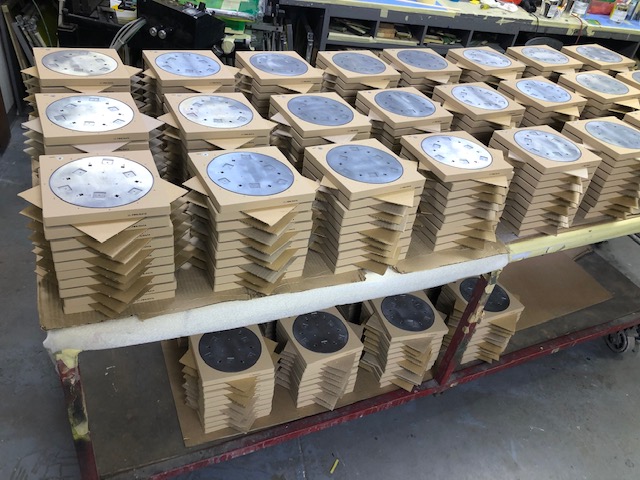MILITARY ∙ MEDICAL ∙ AEROSPACE ∙ ELECTRONICS ∙ SEMICONDUCTOR ∙ CONSTRUCTION
QQ-P-35 is a former military specification that outlined the requirements for the passivation of stainless steel to improve its corrosion resistance. This specification has been canceled and replaced by other standards, most notably ASTM A967, which now serves a similar purpose in both military and commercial applications.
Key Aspects of QQ-P-35:
- Scope: QQ-P-35 covered the procedures for passivating stainless steel parts to remove free iron and other contaminants from the surface, enhancing their corrosion resistance.
- Passivation Methods: The specification included various methods for passivation, generally involving nitric acid treatments. The specific method and concentration of the acid depended on the type of stainless steel and the desired level of passivation.
- Classes and Types: QQ-P-35 specified different classes and types of passivation processes, each suitable for different grades of stainless steel and intended applications.
- Testing and Inspection: The specification outlined tests to ensure the effectiveness of the passivation process. These tests included the copper sulfate test, high humidity test, and water immersion test, similar to those found in ASTM A967.
- Replacement: Since QQ-P-35 has been canceled, ASTM A967 has become the primary standard for passivation in many industries, offering a more modern and widely accepted approach to passivating stainless steel.
Transition to ASTM A967:
After QQ-P-35 was canceled, users and industries that previously relied on this specification transitioned to using ASTM A967. ASTM A967 offers more detailed guidance and includes a broader range of acceptable practices and methods, providing flexibility and updated procedures that align with current industry needs.
Since QQ-P-35 has been canceled and replaced by standards like ASTM A967, you would typically follow the guidelines set out in the current standards to achieve the same results that QQ-P-35 intended. However, if you need to meet the old QQ-P-35 regulations for a specific project or client, here’s how you can approach it:
Steps to Meet QQ-P-35 Requirements:
- Understand the Specification:
- Obtain the Last Version: Although QQ-P-35 is canceled, you can obtain the last available version of the specification. This will provide detailed information on the required passivation methods, classes, and testing protocols.
- Classes and Types: Identify the specific class and type of passivation required for your stainless steel part, as QQ-P-35 had different classifications for different types of stainless steel and applications.
- Choose the Appropriate Passivation Process:
- Nitric Acid Treatments: QQ-P-35 primarily focused on nitric acid treatments. Depending on the class/type specified, you would choose the correct nitric acid concentration, temperature, and immersion time.
- Rinse and Dry: After passivation, thoroughly rinse the parts with deionized water to remove any acid residues and then dry them using air or heat, as per the specification’s guidelines.
- Conduct Required Testing:
- Copper Sulfate Test: This test was commonly required to check for the presence of free iron on the surface of stainless steel. A copper sulfate solution is applied to the part, and the appearance of copper deposits indicates free iron, which could lead to corrosion.
- Water Immersion Test: Immerse the passivated part in water for a specified period. After removal, inspect for any signs of rust or corrosion, indicating inadequate passivation.
- High Humidity Test: Expose the part to a high-humidity environment, typically in a humidity chamber, to ensure the surface is properly passivated and corrosion-resistant.
- Documentation and Traceability:
- Record the Process: Keep detailed records of the passivation process, including the solution concentration, temperature, immersion time, and the results of any tests performed.
- Certification: If required, provide certification that the passivation process and testing meet the QQ-P-35 specifications.
- Ensure Safety Compliance:
- Chemical Handling: Since QQ-P-35 involves the use of nitric acid and other potentially hazardous chemicals, ensure that all safety protocols are followed, including the use of personal protective equipment (PPE) and proper ventilation.
- Waste Disposal: Dispose of any waste materials, including spent acids and rinses, according to local environmental regulations.
Transition to Modern Standards:
While you may need to comply with QQ-P-35 for specific legacy projects, consider discussing with the client or project stakeholders the possibility of transitioning to the current standards like ASTM A967. These newer standards are more comprehensive, widely recognized, and aligned with modern industry practices.


